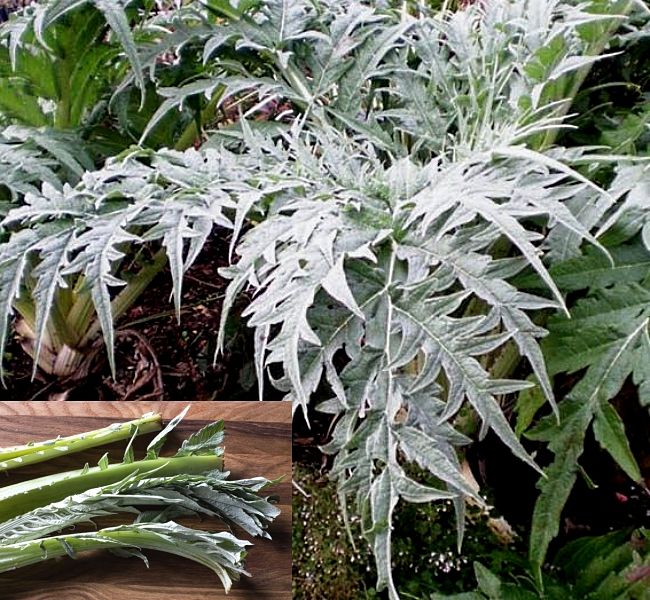Planting and Growing Guide for Cardoon (Cynara cardunculus)
Description
Cardoon is quite similar to Globe Artichokes, to which it is related. Cardoon is grown as an annual for its young leaf-stalks, though it is a perennial plant. The Cardoon stalks which are blanched and are eaten like celery or other vegetable stalks. Cardoon grows best in well-drained soils that are rich in organic matter derived from well-aged compost or manure. Prepare the beds to plant cardoon well in advance to ensure the organic matter is well-aged and is unlike to burn the seedlings. Cardoon is usually blanched to improve the flavor and tenderness. About 3 to 4 weeks before harvest, tie groups of leaves together in a bunch. Or you can wrap paper or burlap around the stems, or build up the soil around the stems to exclude light. To harvest, cut off the steams at the base and discard the leaves. Then slice the stalks into medium size pieces. Place the stalks in boiling water and cook for around 20 minutes until tender. Alternatively, the stalks can be steamed or stir-fried after blanching. Drain the cooked Cardoon stalks. Remove the outer surface of the stalks before using. Cardoon can be used in a variety of dishes, or as a side dish.
Planting Guide
Seed Depth: Plant seed in seed trays and plant out after 4-6 weeks. Seed can be sown directly into the ground after the last frosts, when the soil is warm. Plant seeds about 10 mm (1/2 inch) deep. Planting in seed trays and then transplanting is more reliable.
Space between plants: Space plants about 50-100 cm (2-3 feet) apart. Space rows about 100-120 cm (3-4 feet) apart
Harvest Time: Harvest the steams about 4-6 weeks after cutting off the plants at ground level to promote new growth.
Hints:
- Grows best in full sun or half shade
- Cardoon is frost tender, especially when small
- Regular watering is required, but allow the ground to dry out between watering
- Cardoon prefers a neutral to slightly acid soil (pH of 6.0-7.0)
- Blanching is required to ensure the stalks are tender and taste better
- Cover the soil around the plants with compost to help keep the soil moist
- Cardoon can grow very large if left to grow to maturity. Seeds can spread easily, and it can become an invasive weed. So best grown as an annual not allowing plants to mature.

Disclaimer: The PlantWhatWhen vegetable planting guide is only designed for use as a very general reference for home gardening purposes. It is not to be used for farming, markets or commercial activities of any kind whatsoever. We take absolutely no responsibility for the accuracy and adequacy of the information provided on this site. We recommend that you consider your local climate, weather patterns and conditions when deciding what and when to plant in your home garden. It's entirely your own decision. Happy Gardening and Best Wishes!